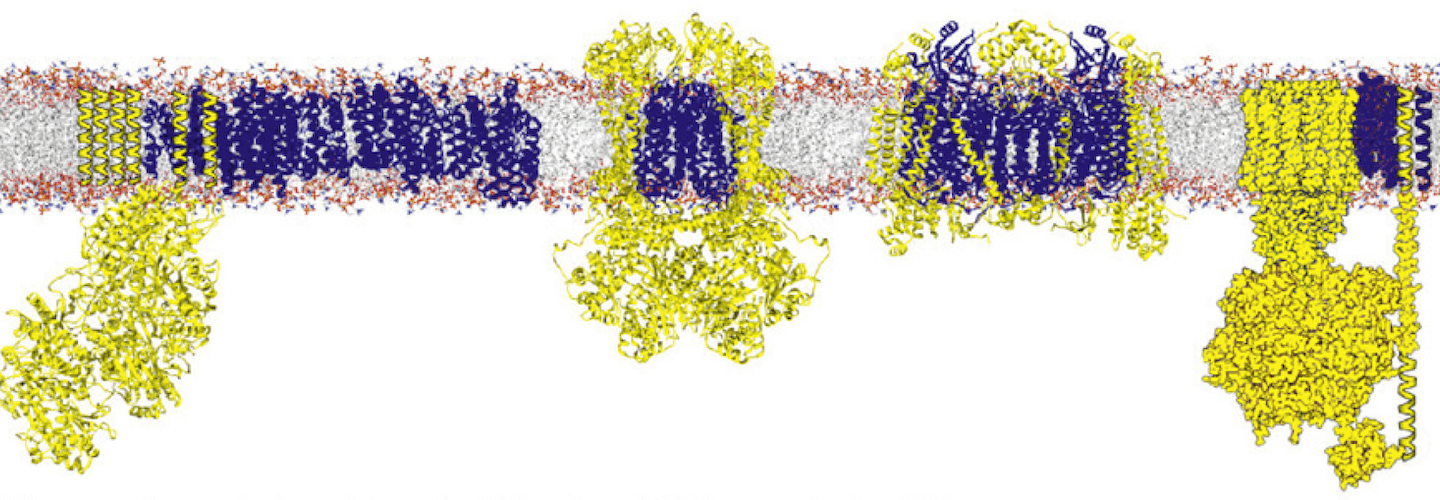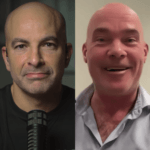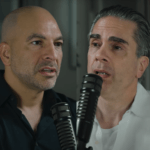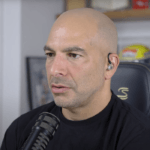In this episode, Dr. Vamsi Mootha, an expert in mitochondrial biology and an investigator at the Howard Hughes Medical Institute, shares his breadth of knowledge on the mitochondrion organelle: its history, function, genome architecture, and his research of rare mitochondrial dysfunction. Vamsi is currently focused on finding clinical treatments for the 300-some identified rare mitochondrial disorders, but in this work there is a wealth of potential implications for longevity and chronic disease. In this conversation, Vamsi elucidates how the latest research could give insight into conditions related to aging, including but not limited to Alzheimer’s, Parkinson’s, insulin resistance and type 2 diabetes, cancer, and much more. We also explore some of the most exciting potential therapies for mitochondrial diseases such as hypoxia (oxygen deprivation), how exercise affects the mitochondria, the use of hyperbaric chambers for cancer therapy, and the mechanisms by which metformin might confer longevity benefits in a non-diabetic individual.
Subscribe on: APPLE PODCASTS | RSS | GOOGLE | OVERCAST | STITCHER
We discuss:
- The Broad Institute of MIT and Harvard [8:00];
- Vamsi’s academic background [10:30];
- Advice for college students and med students considering a career in medicine and/or medical research [15:30];
- Vamsi’s focus on mitochondria and mitochondrial disorders [20:00];
- The mitochondrial genome: Lineage, endosymbiosis, and reductive evolution [23:15];
- How many diseases can be attributed to mitochondrial mutations? [28:45];
- Nuclear DNA and mtDNA: Roles, interaction, communication, and biogenesis [31:30];
- Which cells have the most mitochondrial DNA? And how often does mitochondria turn-over in a cell? [37:30];
- Does ALL of your mitochondrial DNA come from your mother? [40:00];
- Mitochondria 101: The powerhouse of the cell, electron transport chain, and the NADH/NAD ratio [44:00];
- NAD and NADH: Role in the mitochondria, decline of NAD levels with age, and what it means to age at a mitochondrial level [51:30];
- Mitochondrial diseases Vamsi studies in his lab [55:15];
- Mitochondria and oxygen: Poor oxygen utilization and excess oxygen contributes to the pathology seen in some of the rare mitogenic diseases [1:02:00];
- What VO2 max can tell us about mitochondrial function, insulin resistance, type 2 diabetes, and more [1:10:00];
- Can studying mitochondrial disease provide insights into the common forms of aging? [1:18:45];
- Could muscle cell inflammation (a signature of aging) be caused by mtDNA damage being confused as foreign bacteria? [1:22:00];
- Exercise and mitochondrial health: Is there an optimal exercise strategy to slow the aging process? [1:27:00];
- What autophagy means in the context of mitochondria [1:36:15];
- Metformin’s impact on exercise and lactate levels [1:40:15];
- How might metformin confer longevity benefits? [1:48:15];
- Hypoxia as a potential therapeutic option for mitochondrial disease [1:52:45];
- Cancer prevention and treatment: hyperbaric oxygen chambers, targeting single carbon metabolism of the mitochondria, and more [2:00:00];
- Chronic diseases have altered mitochondria: Evidence for mitochondrial dysfunction causing Parkinson’s Disease [2:04:30];
- Why Vamsi is very optimistic about the possibility of targeting mitochondrial proteins as therapies [2:09:30];
- Is it theoretically possible to genetically engineer a better functioning mitochondria? [2:14:30];
- Vamsi’s fantasy experiment in an unconstrained world [2:20:15]; and
- More.
The Broad Institute of MIT and Harvard [8:00]
- Creation and vision for the Broad Institute was “an experiment” by Eric Lander – one of the leaders of the human genome sequencing project
- Lander wanted to create an institute that could utilize genomics for the improvement of biomedicine
- It is joint between Harvard and MIT and includes all the hospitals in Boston
- It is a forum where researchers can collaborate and pursue research that they would not be able to do in their individual laboratories
- Either researchers are employed by the institute or employed elsewhere (as is the case for Vamsi) as their primary appointment, but spend time at the institute working on collaborative projects
Vamsi’s academic background [10:30]
- Growing up, he was convinced that he wanted to be a doctor
- When he was in high school, he fell in love with math and went to Stanford as a math and computer science major
- As a college student, his advisor introduced him to the work of Sam Karlin – a statistician who developed some of the underlying methods for biomolecular sequence analysis
- Vamsi worked on a DNA sequence analysis as a college student: writing code to analyze DNA and protein sequences.
- He fell in love with the research and his advisor suggested that he consider a career in medicine
- He applied simultaneously to PhD programs in mathematical biology and also applied to a joint program between Harvard and MIT (HST): an interdisciplinary program that brings together engineering, physical, and biological sciences
- Completed his residency in internal medicine at Brigham and Women’s Hospital in Boston
Advice for college students and med students considering a career in medicine and/or medical research [15:30]
“The advice that I’d gotten when I was in college was that…
{end of show notes preview}

Vamsi Mootha, M.D.
Vamsi Mootha is an Investigator of the Howard Hughes Medical Institute and a Professor of Systems Biology and of Medicine at Harvard Medical School. His laboratory is based in the Department of Molecular Biology and Center for Genome Medicine at Massachusetts General Hospital. Dr. Mootha leads a research team dedicated to mitochondrial biology.
Dr. Mootha received his B.S. (with honors, with distinction) in Mathematical and Computational Science at Stanford University. He then received his M.D. (cum laude) from the Harvard-MIT Division of Health Sciences and Technology, where his thesis research focused on mitochondrial energetics. Following an internship and residency in Internal Medicine at Brigham and Women’s Hospital, he pursued postdoctoral training in genomics at the Whitehead Institute.
His research group consists of clinicians, computer scientists, and biologists, who work collaboratively to elucidate the network properties of mitochondria, and how these properties go awry in human disease. His work has led to the discovery of nearly 20 Mendelian disease genes, to the discovery that mitochondrial dysfunction is associated with the common form of type 2 diabetes mellitus, and to the discovery of all of the molecular components of the mitochondrial calcium uniporter. His team has also developed generic, computational tools that have been widely used in biomedical research.
Dr. Mootha has received a number of honors, including a MacArthur Foundation Fellowship, the Judson Daland Prize of the American Philosophical Society, the Keilin Medal of the Biochemical Society, a Padma Shri from the Government of India, and election to the National Academy of Sciences. [mootha.med.harvard.edu]






Peter your question to Dr. Mootha about how oxygen gets to mitochondria was incorrectly answered. O2 is paramagnetic and it is DRAWN to magnetic fields. That is the force that causes it to leave hemoglobin and go to the distal end of the electron chain transport. Oxygen is the only paramagnetic gas on the periodic table and all mitochondria generate magnetic fields from the spinning F0 head of the ATPase. We can experimentally prove this with MEG data.
Take a look at http://www.minovia.com, the leader in Mitochondrial Augmentation Therapy. Currently doing compassionate treatments in children with a rare mitochondrial disease.
According to recent HumanOS Podcast, Ben Miller suggests the benefits of metformin are different for the sedentary vs active individual. In the latter, it appears to actually blunt the positive mitochondrial respiration changes in the muscle, vo2 max, and increased insulin sensitivity that usually occur long-term with aerobic exercise. So while metformin mimics exercise in the initial pathways that are activated, the long-term adaptations to exercise (increase in ppar-gamma/ppq-alpha) seem to be missing with metformin, and possibly be hindering! There was also an interesting episode of Freakonmics (Zero-Minute Workout) that is also a good listen for anyone interested in the subject.
I’d be interested to read/hear a dialogue between Dr Attia and Dr Kruse on the topic of mitochondria and the role of water.
If mitochondria were originally bacteria, does taking antibiotics harm them?
Another question: I read that farmers give antibiotics to animals to help fatten them up faster; are humans who have had antibiotics more likely to be fat? And those who have had many doses of antibiotics more likely to be even fatter?
I guess my follow up would be: is eating meat that was raised with antibiotics and/or hormones dangerous to the mitochondria in people and even fetuses in utero?
And with some forms of Parkinson’s being caused by toxicity, is it possible that pesticides and herbicides applied to farms is causing toxicity in humans, via food and watersheds?
If so, what are scientists doing to prove this and bring it to the attention of lawmakers? Shouldn’t all food be as organic as possible?
Responding to Ben and to the reference to the beneficial anti-aging effects of metformin in the podcast.
You may be interested in recent published research from Aging Cell, Dec 2018 by Konopka & Miller:
Metformin inhibits mitochondrial adaptations to aerobic exercise training in older adults
https://onlinelibrary.wiley.com/doi/full/10.1111/acel.12880
This data raises quite a big question mark over the wisdom of taking metformin as an anti-aging measure (at least, for those of us who believe that there are significant beneficial anti-aging effects of exercise).
In February last year, out of nowhere, my eyes became light sensitive, had slurred speech and I was diagnosed of PARKINSON DISEASE. I started out taking only Azilect, then Mirapex and sinemet as the disease progressed but didn’t help much. In July, I started on PARKINSON DISEASE TREATMENT PROTOCOL from Mayaka Natural Clinic One month into the treatment, I made a significant recovery, almost all my symptoms were gone. Its been 6 months since I completed the treatment, I live a better life..